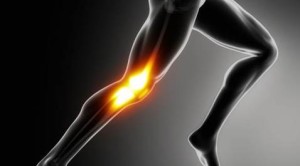Everything Athletes Need to Know About Preventing and Treating ACL Injuries
 Anterior cruciate ligament (ACL) injuries are some of the most common injuries that athletes experience. Even professional athletes like women’s soccer champion Alex Morgan and Broncos cornerback Chris Harris, Jr. have struggled to recover from torn ACLs.
Anterior cruciate ligament (ACL) injuries are some of the most common injuries that athletes experience. Even professional athletes like women’s soccer champion Alex Morgan and Broncos cornerback Chris Harris, Jr. have struggled to recover from torn ACLs.
Whether you’re a recreational athlete or someone whose hoping to go pro, it pays to know how to prevent and treat an ACL injury. Read on to learn more about this injury and what you can do to avoid being sidelined by it.
What is an ACL Injury?
The anterior cruciate ligament is a major stabilizing and supporting ligament in the knee. It’s responsible for connecting the femur (thigh bone) and tibia (shin bone). The ligament is located in the front of the knee, right above the top of the shin bone and behind the patella (kneecap).
An ACL injury is technically a type of sprain. As with other types of sprains, there are grades of a sprained knee that determine how serious the injury is.
ACL injuries can be broken down into three different grades:
-
Grade 1 — 10 percent or less of the ligament fibers are torn
-
Grade 2 — 11-90 percent of the ligament fibers are torn
-
Grade 3 — more than 90 percent of the ligament fibers are torn and the ligament has completely ruptured
Almost any athlete can suffer from an ACL injury, but athletes who do a lot of jumping or have to stop and/or change directions suddenly are more likely to experience damage to their ACL. Basketball players, soccer players, tennis players, downhill skiers, volleyball players, and gymnasts tend to experience the greatest number of ACL injuries.
Symptoms of an ACL Injury
An ACL injury is typically characterized by a loud “popping” sound or sensation in the knee. Many people also experience swelling, instability, loss of range of motion, and pain when trying to bear weight.
How Common are ACL Injuries?
Hundreds of thousands of ACL injuries occur every year, and the injury rate is highest in competition compared to practice.
The results of one study found that female soccer players tend to have the highest rate of injury, followed by male football players. Male baseball players had the lowest rate of injury.
How Can Athletes Prevent ACL Injuries?
ACL injuries may be common, but they’re certainly not inevitable. There are many steps that athletes can take to prevent these injuries and reduce their risk of being sidelined from their sport of choice. Some of the most effective preventive measures athletes can take include:
Improving Conditioning
An effective conditioning program can help improve overall fitness and improve strength. This, in turn, can reduce one’s risk of experiencing an ACL injury.
A good conditioning program should include the following types of training:
-
Aerobic training
-
Jump training
-
Plyometric exercises
-
Strength training
-
Balance training
Risk awareness training can also be beneficial for athletes who are more prone than others to ACL injuries.
Strengthening Hamstrings
Athletes should also pay special attention to their hamstrings, as weak hamstrings have been shown to contribute to one’s risk of an ACL injury.
Female athletes, in particular, need to dedicate time to strengthening their hamstrings because they typically have significantly stronger quadriceps — this muscle imbalance can increase women’s risk of experiencing ACL injuries.
Using Proper Technique
Research shows that faulty mechanics account for a significant portion of ACL injuries, so taking the time to learn and practice proper technique can go a long way in preventing ligament tears.
Most ACL injuries are non-contact injuries, meaning they’re not caused by a collision with another player. Some techniques that athletes should pay special attention to when working to avoid injury include:
-
Cutting
-
Pivots
-
Decelerating
-
Direction changes
-
Landing jumps
Many athletes have a tendency to let their knee cave in (knee valgus) when executing these movements, which increases their risk of hurting their ACL.
How Can Athletes Treat ACL Injuries?
Initial treatment for ACL injuries typically involves the following components:
-
Ice
-
Compression
-
Elevation
-
Rest
The knee may also be stabilized with a brace or bandage to help minimize pain and swelling.
Athletes should make an appointment with a sports medicine professional as soon as possible following what they believe to be an ACL injury. The doctor will evaluate the injury, using X-rays and MRI scans to determine the severity of the injury and see if any other part of the joint — such as the cartilage or meniscus — has been injured as well.
Following the appointment, your doctor will give you a treatment plan that fits the severity of your ACL injury. For people with mild (Grade 1) ACL injuries, surgery may not be required and the doctor will suggest rest and rehabilitation exercises. For athletes with more serious ACL injuries, reconstruction surgery and physical therapy are often required.









